This article was co-authored by Deanne Pawlisch, CVT, MA. Deanne Pawlisch is a Certified Veterinary Technician, who does corporate training for veterinary practices and has taught at the NAVTA-approved Veterinary Assistant Program at the Harper College in Illinois and in 2011 was elected to the board of the Veterinary Emergency and Critical Care Foundation. Deanne has been a Board Member of the Veterinary Emergency and Critical Care Foundation in San Antonio, Texas since 2011. She holds a BS in Anthropology from Loyola University and an MA in Anthropology from Northern Illinois University.
There are 9 references cited in this article, which can be found at the bottom of the page.
This article has been viewed 43,681 times.
Worms are a common but treatable health issue among cats. Most kittens are actually born with intestinal worms or become infected with them very early in life, and need to be dewormed every 2 weeks until they are 3 months of age.[1] Although the thought of worms can make you squirm, they are fairly easy to treat. In order to get rid of worms in cats, you should look for the common symptoms, seek medical attention, and administer medication as directed by your vet.
Steps
Seeking Medical Attention
-
1Look for common signs of worms. There are a variety of different worms that can infect your cat, including tapeworms, roundworms (also known as Toxocara cati), hookworms, and, less commonly, stomach worms. Worms can be difficult to notice because they live in your cat’s intestines and the symptoms vary slightly depending on the type of worm infestation. Some symptoms to look for include:[2]
- Swollen abdomen
- Loss of appetite or weight loss
- Diarrhea
- Vomiting
- A dull-looking coat
- Blood or mucous in the feces (poop)
- Visible worms in the feces
- Tapeworm segments (which look like small grains of rice or sesame seeds) clinging to the fur around the cat’s anus
-
2Collect a fresh stool sample. If you suspect that your cat may have worms, collect a fresh stool sample from your cat’s litter box. Scoop the stool sample into a plastic bag and bring it to your vet for testing.[3]
- A fresh stool sample is needed to correctly and accurately diagnose the type of worm.
Advertisement -
3Take your cat to the vet. It is important that you take your cat to the vet for proper diagnosis and treatment options. Your vet will be able to test the stool to identify the exact type of worm and determine the proper treatment.[4]
- Your vet will also be familiar with common worms in the area.
Treating the Worms
-
1Follow the instructions provided by your vet. Once your vet has diagnosed the type of worm, they will recommend a treatment option. This may include an oral medication or some form of topical treatment. Make sure to follow your vet’s recommendations closely and give the proper dosage.[5]
-
2Administer the medicine. Deworming medications typically take the form of either an oral pill or a topical ointment that is applied to the skin. To give a cat a pill, hide it in their food or purchase pill treats that have a space for hiding pills.[6] Topical ointments should be applied directly to the cat’s skin.[7]
- Make sure to closely follow all of the instructions provided and continue the medication as directed.
- Some cats are good at finding pills hidden in their food, so you may need to ask your vet for instructions on how to give your cat pills directly.
-
3Give your cat a treat. Once you have administered the medication, give your cat a treat or some positive attention. This is a nice reward that will make it easy for you to continue giving medications in the future.
Preventing Your Cat from Getting Worms in the Future
-
1Give your cat preventative medicine throughout its life. Kittens and even adult cats may come into contact with worms throughout their lives. Ask your vet about preventative medications to control fleas as well a variety of worms. These typically need to be given monthly and will help to prevent infestations.[8]
- Using preventative flea treatments will also protect your cat from getting tapeworms, which cats get when they swallow infected fleas.
-
2Maintain a clean environment. Worms can transfer to your cat through their fecal matter. Make sure to clean the litter box daily to help control the spread of worms. This is especially important if you have multiple cats in your house.[9]
-
3Keep your cat indoors. If you are worried about your cat getting worms, then you should keep your cat indoors. Outdoor cats are more susceptible to worms because they are more apt to come into contact with fecal matter, fleas, or rodents that can transfer worms.[10]
Warnings
- Kittens and adult cats with weak immune systems are more likely to experience serious symptoms with worms and other intestinal parasites.[11] It’s very important to treat vulnerable cats for worms and use preventative measures to keep them from getting infected.⧼thumbs_response⧽
References
- ↑ https://icatcare.org/advice/worming-your-cat/
- ↑ https://www.vet.cornell.edu/departments-centers-and-institutes/cornell-feline-health-center/health-information/feline-health-topics/gastrointestinal-parasites-cats
- ↑ https://www.petsandparasites.org/cat-owners/roundworms/
- ↑ https://www.petmd.com/cat/parasites/worms-cats-everything-you-need-know
- ↑ https://www.petmd.com/cat/parasites/worms-cats-everything-you-need-know
- ↑ https://vcahospitals.com/know-your-pet/giving-pills-to-cats
- ↑ https://vcahospitals.com/know-your-pet/applying-ointments-creams-and-lotions-on-cats
- ↑ https://vcahospitals.com/know-your-pet/tapeworm-infection-in-cats
- ↑ https://www.petsandparasites.org/cat-owners/roundworms/
About This Article
To get rid of worms in cats, start by collecting a fresh stool sample to take to your vet for an accurate diagnosis. Once your vet determines the type of worm your cat has, they’ll recommend a treatment option, such as an oral pill or a topical ointment. In order to give your cat a pill, hide it in its food or purchase some pill treats that have a special pouch for hiding pills. Alternatively, if your vet recommends a topical ointment, apply it directly to your cat’s skin. After you give your cat its medication, give it a treat or positive attention as a reward. To learn how to prevent your cat from getting worms in the future, keep reading!

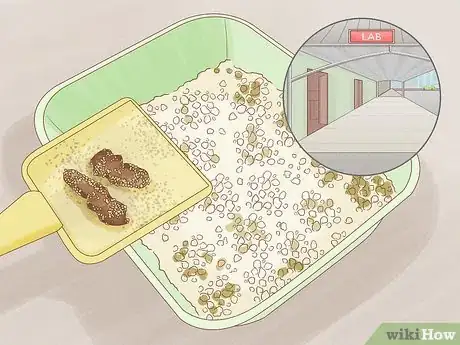
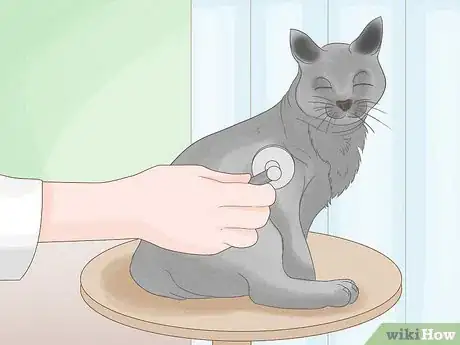
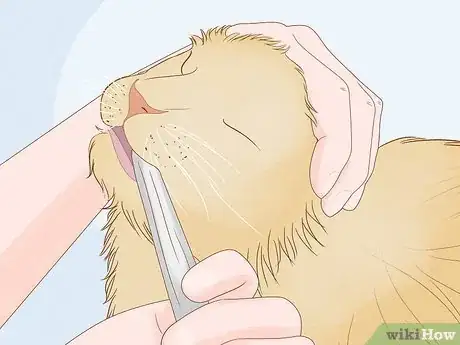
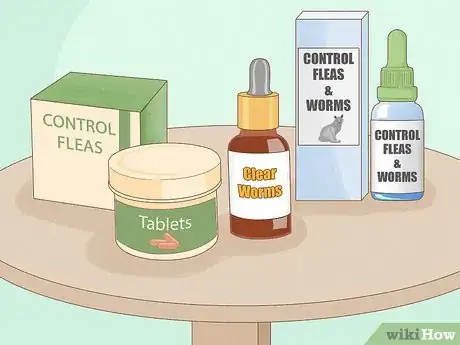

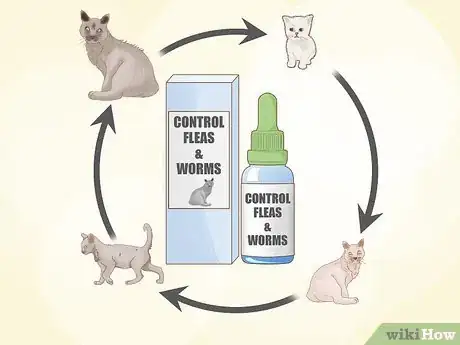
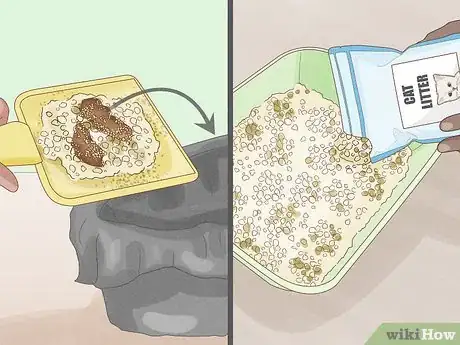
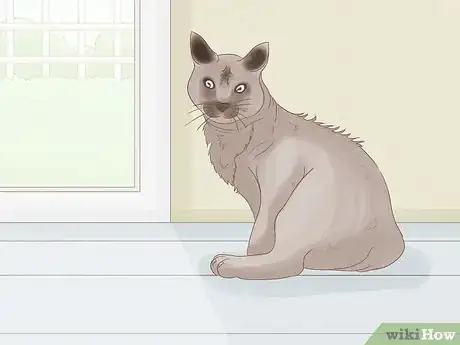

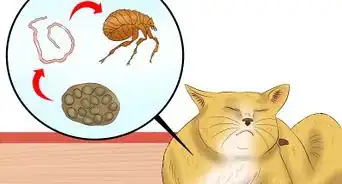





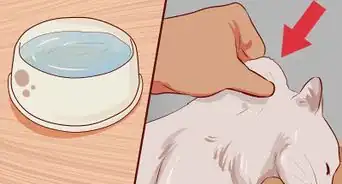

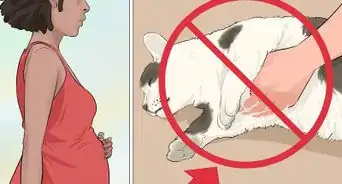
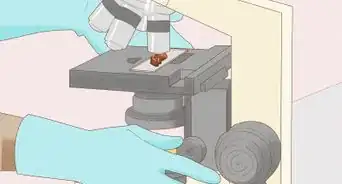
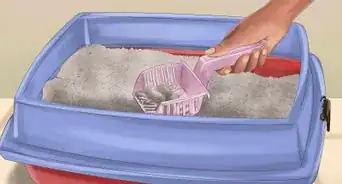
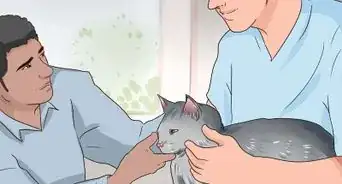
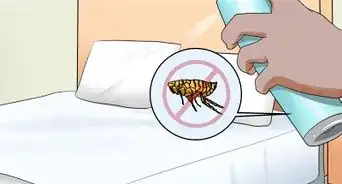














































Medical Disclaimer
The content of this article is not intended to be a substitute for professional medical advice, examination, diagnosis, or treatment. You should always contact your doctor or other qualified healthcare professional before starting, changing, or stopping any kind of health treatment.
Read More...